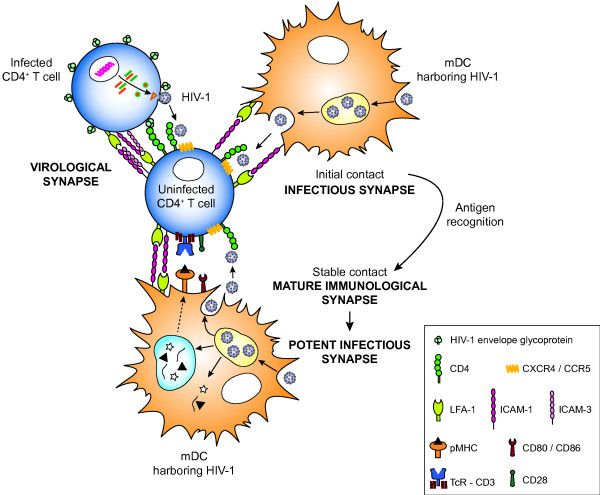Figure 5.
Comparison between the formation of virological, infectious, and immunological synapses. Different molecules are involved in the formation of these synapses, although they all enable infection of CD4+ T lymphocytes by HIV-1. The virological synapse relies on engagement between the Env on the surface of an HIV-1-infected cell with the CD4 molecule in the uninfected target cell and on adhesion molecules such as ICAM-1, LFA-1 and ICAM-3. On the other hand, the initial contact between a mDC and a CD4+ T cell is dependent on the adhesion molecules ICAM-1 and LFA-1. If cognate pMHC-TcR recognition occurs, contact between mDC and T cells stabilizes, thus constituting a mature immunological synapse. This antigen-specific signaling also involves co-stimulatory receptors and adhesion molecules and induces strong T-cell activation. When mDC harbor HIV-1, contacts between mDC and T cells would become infectious synapses, since HIV-1 could exploit the pre-existing cell-to-cell interactions to gain access to the target cells without modulating conjugate formation. Therefore, in the context of antigen-specific recognition between mDC harboring HIV-1 and T lymphocytes, immunological synapses would turn into potent infectious synapses by increasing the susceptibility of CD4+ T cells to productive HIV-1 infection. For simplicity, additional DC-T-cell interactions are not depicted.

